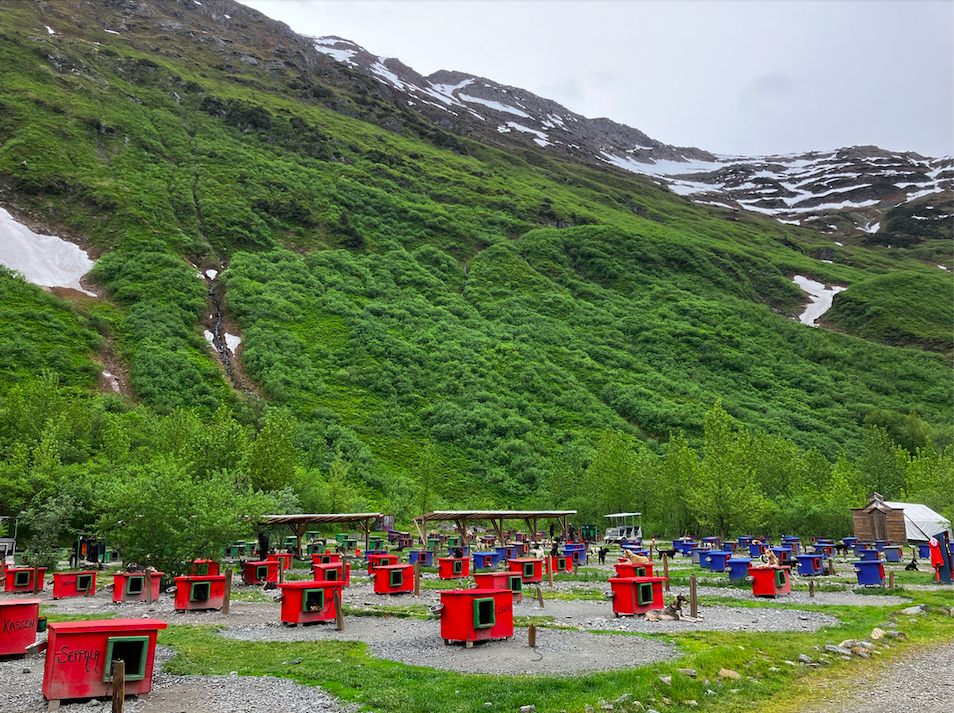
At 5:30 that afternoon, we all gathered together for a minibus ride deep into the hills to see the dog camp.
During the day we bumped into other people who had been there before us. They all raved about how good it was. Both Megan and I wore our old clothes so we could get covered in dog hair and it wouldn’t matter, and we were set to go.
The trail to the camp was narrow and very exacting for the driver. The forest was deep all around us as we went higher and higher. The campus is about 1,000 feet up, which is a steep climb, considering that the city of Juneau is only 36 feet up from sea level.
It was an old goldmine back in the day but this is about the only flat space around, so these people have leased the land from the old gold mining company as a dog training camp. It’s been here for about 20 years.
The dogs are bred for performance not for looks, so unlike the traditional Siberian husky who are pretty useless at racing, these ones are built for performance and strength.
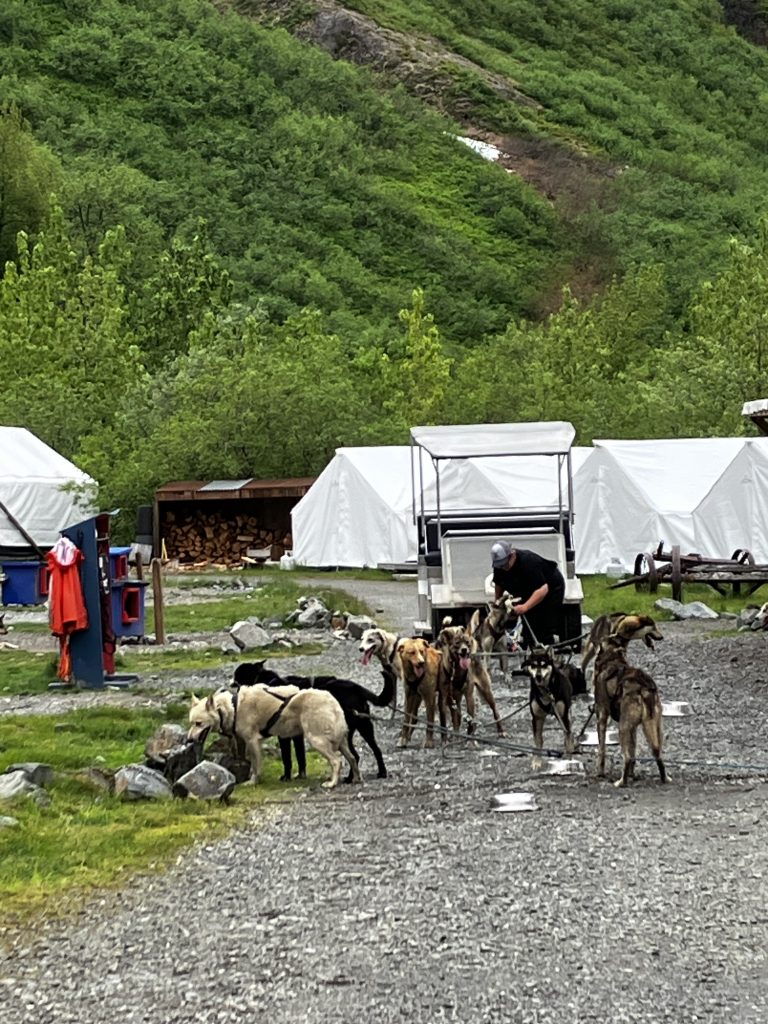
175 dogs live here during the summer. The dogs are built to enjoy extreme cold, so bringing them here is a kindness. The summers are far too hot for them where they come from. Each doghouse is a different colour – depending on who owns the dogs. The red houses , for example, belong to the 47 dogs that one woman here owns.
Sledding dogs is a whole lifestyle for the owners. This is a real training camp. The dogs come here and haul fat tourists like us around all day on carts that they have to drag along the ground. This builds them up beautifully. When the’re suddenly in the snow in winter, dragging only one person in a proper racing sleigh, they go FAST.
You’d expect a working dog to be a serious being, but they’re not. We were warned not to get too close, because the dogs will hurl themselves at you, demanding cuddles and pats, and these dogs are strong.
“Even now, when I’ve been working with them for years, if one catches me unawares, they can send me flying,” said Jake, who was our driver.
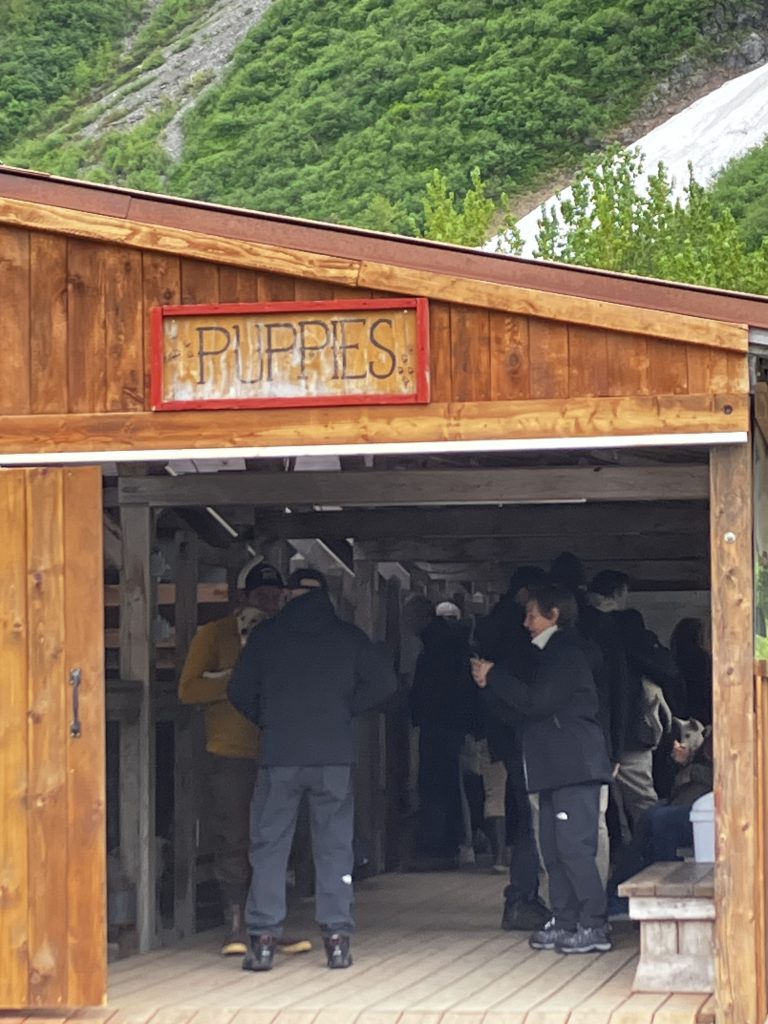
As soon as we arrived, eeryone noticed this enticing sign.
“Now, no one sneak off and have a look at the puppies,” said the woman with the 47 dogs. “We have them right at the end of thetour, because we know that if we let you go there first, none of you will want to see anything else!”
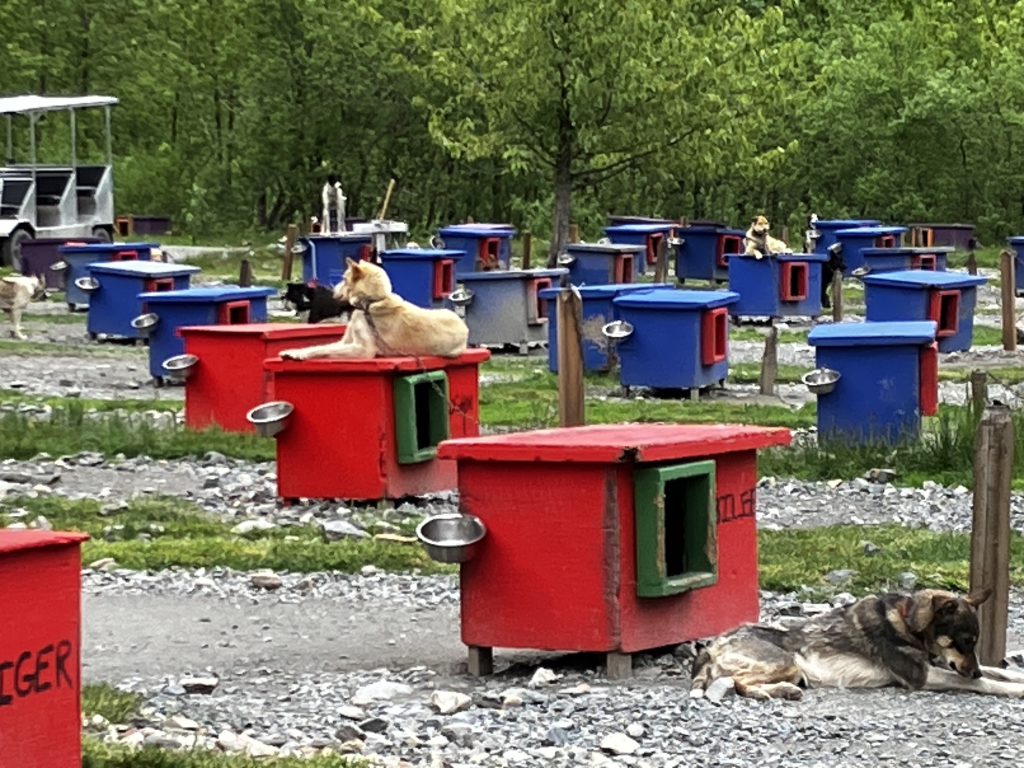
It’s Alaskan law that every dog has to have its own house, and it has to be chained to that house when its not working.
“In Oregon, where I live,” said Jake, “we have a huge open farm and the dogs can run where they like. But here, they have to live on a chain. It happened because some dogs in very remote communities got too protective and they went after children. It doeasn’t bother them too much and here, they’re out training two or three times a day.”
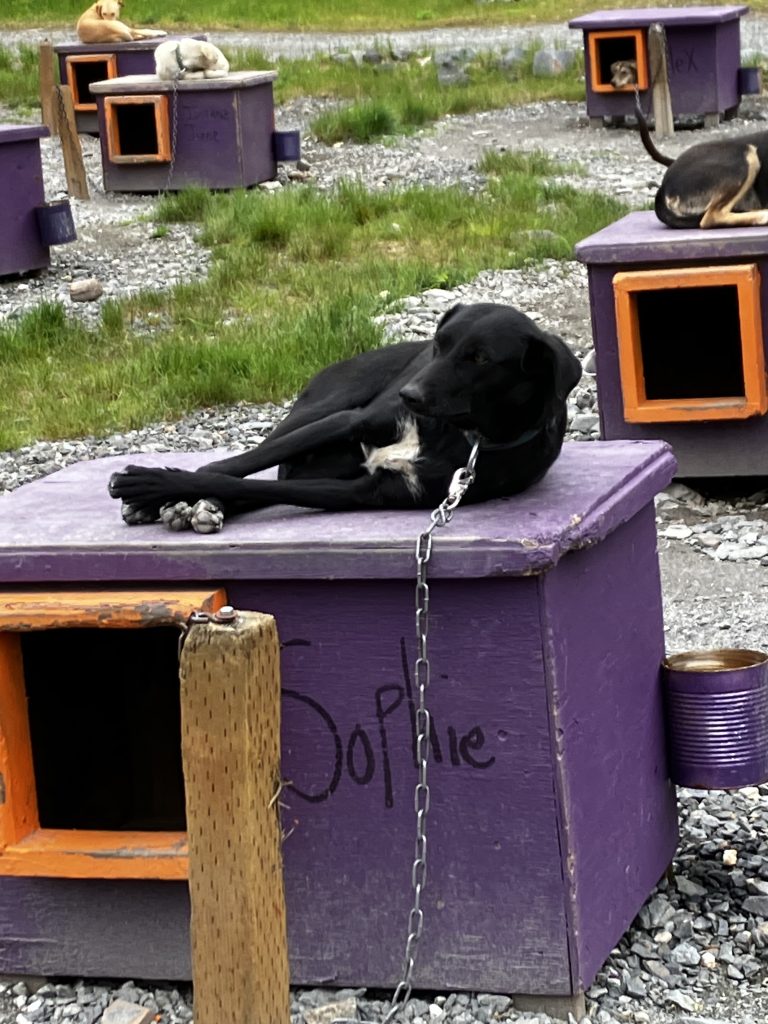
Sophie was taking it easy.
I was subconsciously expecting huskies before I arrived, but of course for racing dogs, the only thing these people care about in their breeding programs is speed and health. These animals have to perform in extreme conditions. They’ve used Greyhounds, Salukis and other racing dogs over the years, but basically what they’re looking for is speed, endurance, (especially if they do the really long races like the Iditarod), and intelligence. They have to be able to work in a team.
Jeffrey would have no hope!
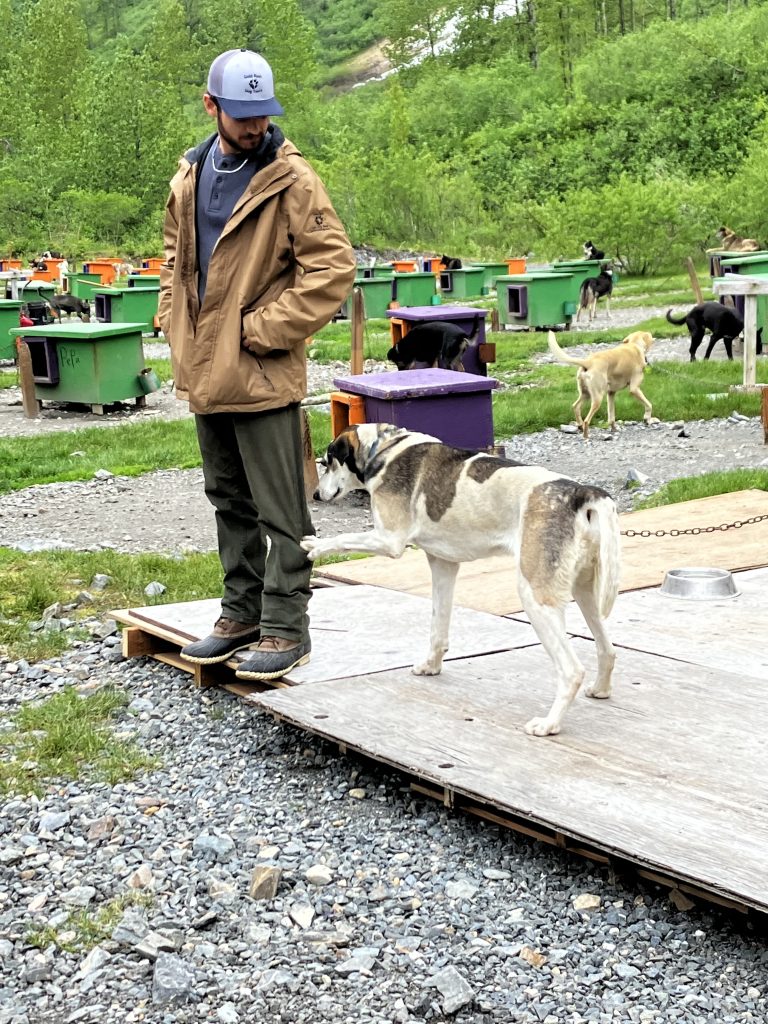
Someone asked why this dog was up on a platform.
“Oh, that’s because when he got here, he started eating rocks,” said Jake. “He ate so many that he got backed up and he had to have an operation to get them out. It cost thousands of dollars. But he deserves his little throne. He’s a good dog.”
I know I love my dogs, but these people here live tfor them. They live beside them here in tents in the summer, they take all 47 of them travelling and they speak of them individually with so much affection.
It was a lovely thing to see.
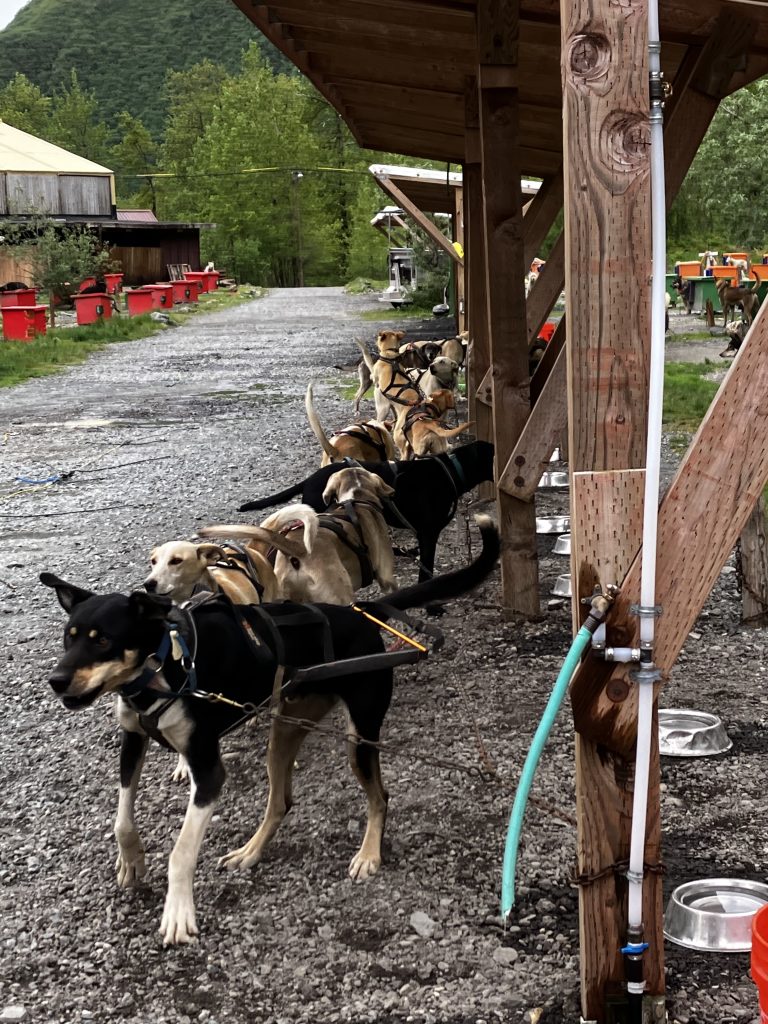
The first group was called out and we were part of it. Here are the dogs who were waiting to take us out.
The noise was incredible! These ones were excited because they knew they were going to have a run, while the others were all barking in protest because they wanted to get out too.
These dogs LOVE their work. Watch this next video – it’s the first part of our run. When we were asked who wanted to sit in the front seat, of course I was leaping up before the guy had finished his sentence. I wanted to see it all! Megan, who is tall, isn’t (yet) used to frontside viewing. She sat beside me in the front seat but scrunched down a bit for the sake of the people behind.
It was so much fun!
The front dogs were called Georgia (on the left) and Ranger. He was there for the muscle and she was there for her intelligence.
Both of them are great at ignoring things that a normal dog would find impossible to resist. A bird flew across the path and into the trees, but these two just kept going forward.
“The wrong dog would have pulled us into the trees!” said Jake.
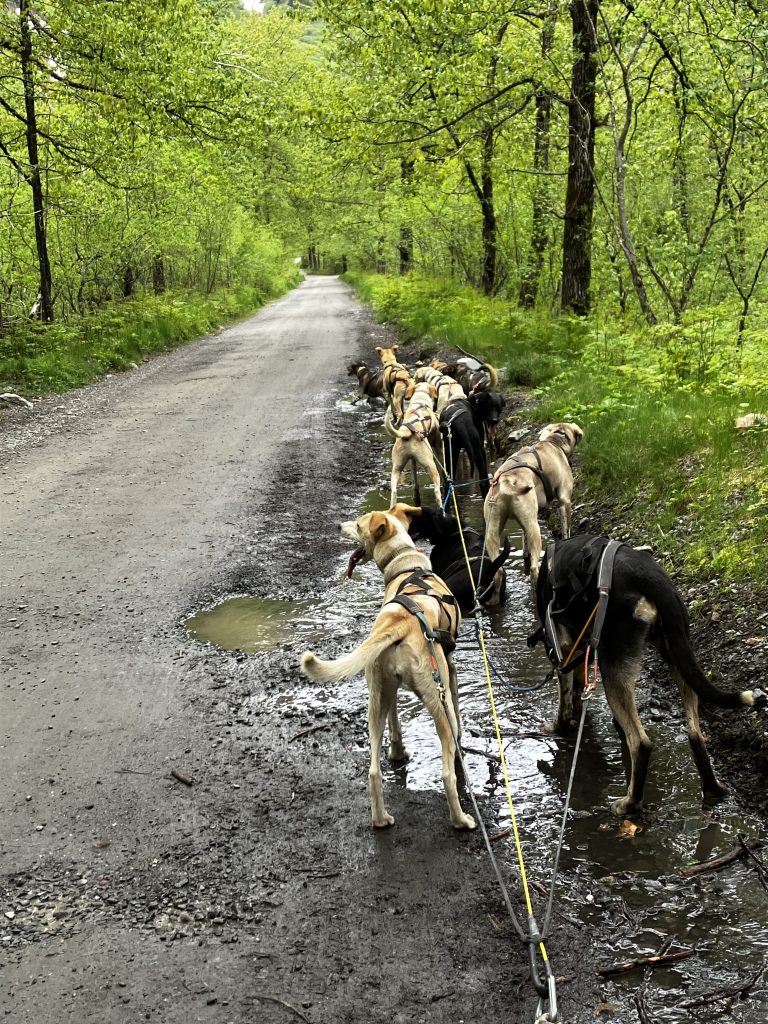
Every now and then Jake wuld pull over the team for a rest. He said that even in the summer in Alaska, they have to guard against the dogs getting too warm.
“Too cold isn’t usually a problem, ” he said. “It’s when they get too warm that they start having issues. Occasionally we give them an opportunity to cool down and collect their sanity but they don’t really know the concept of stop. That’s why they get anxious. The other dogs run this path earlier so never mind about stopping to cool down! They’re thinking it’s a race and they’re trying to chase down this other teams. That’s how we do it. Follow the scent of the ones before and then once we get confirmation, we catch up and go past them. That’s where the hound comes in, it’s pure instinct.”
He got down off the cart, as a couple of the dogs had jumped around so much in excitement that they’d got a bit tangled. As he was doing that, the back two dogs swapped sides without him seeing. Earlier he’d said that the big black dog was trying to intimidate other dogs – he is two years old and feeling his oats – so he’d put him next to a very stable-natured girl. When he jumped over, she simply looked at him, raised and eyebrow and swapped to the other side without any fuss.
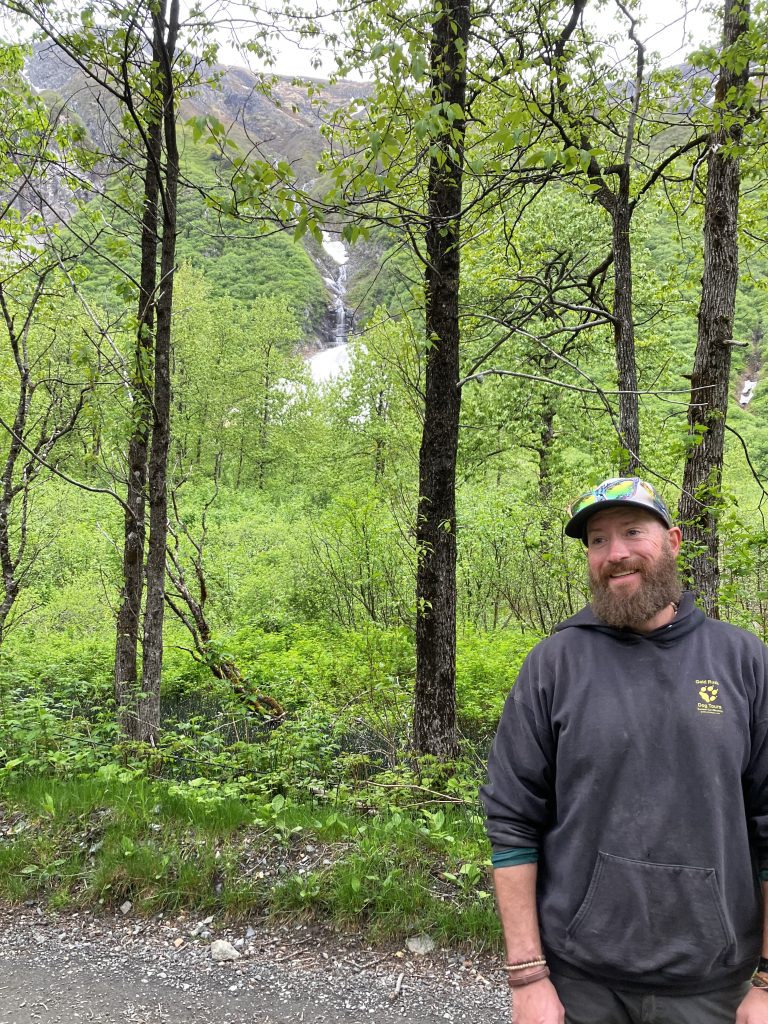
He pointed to the waterfall behind him.
“See that puddle they’re lying in? We built that specially for them. They’re standing in this water and lying down and it helps cool them down rapidly. Drinking helps cool them internally, The snow is now melting in the spring, and that waterfall is melting glacier water and that’s what we’re pumping to this puddle so it’s just a few degrees above freezing. It’s very cold. Brings down their body temperature is really quickly. You can see Georgia up front just lying down in it.”
In a surprisingly short space of time the team were all jumping up and down and barking to be let go again.
They absolutely love it!
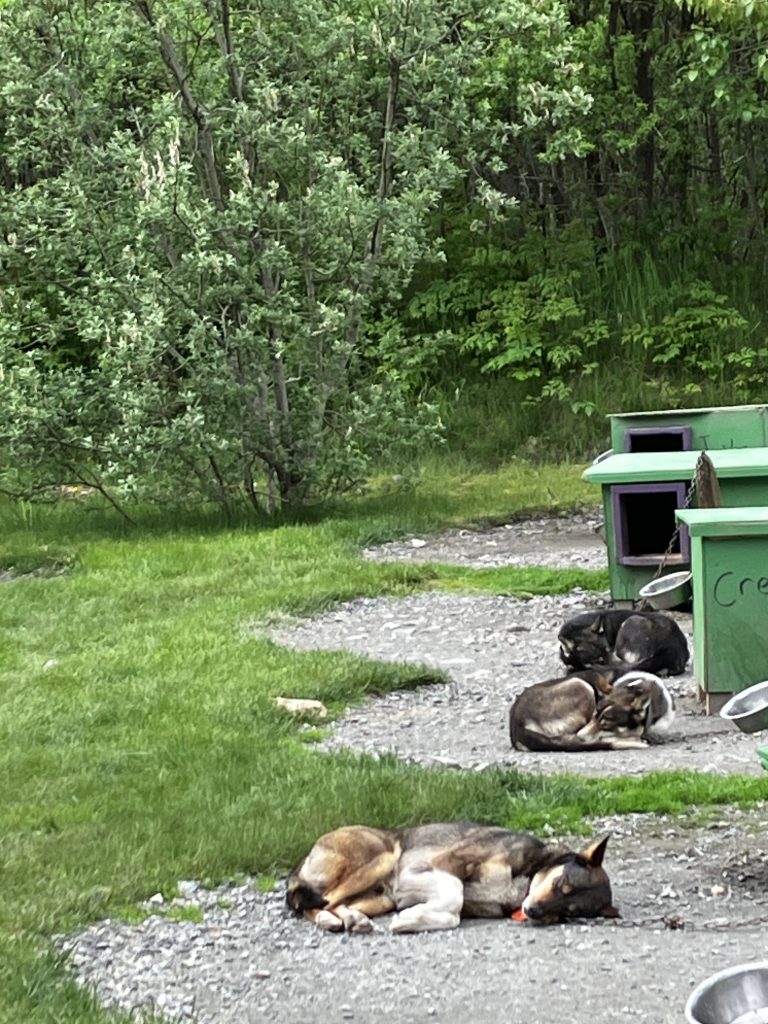
These dogs are fed once a day, after the last tour has gone. The handlers are very conscious of gastric torsion, which can kill a dog in a matter of hours, so they take very good care to feed them only after all exercise is done for the day. That includes when they’re racing.
They eat a huge amount of calories every day, but they burn it all off, especially when they’re racing in the winter.
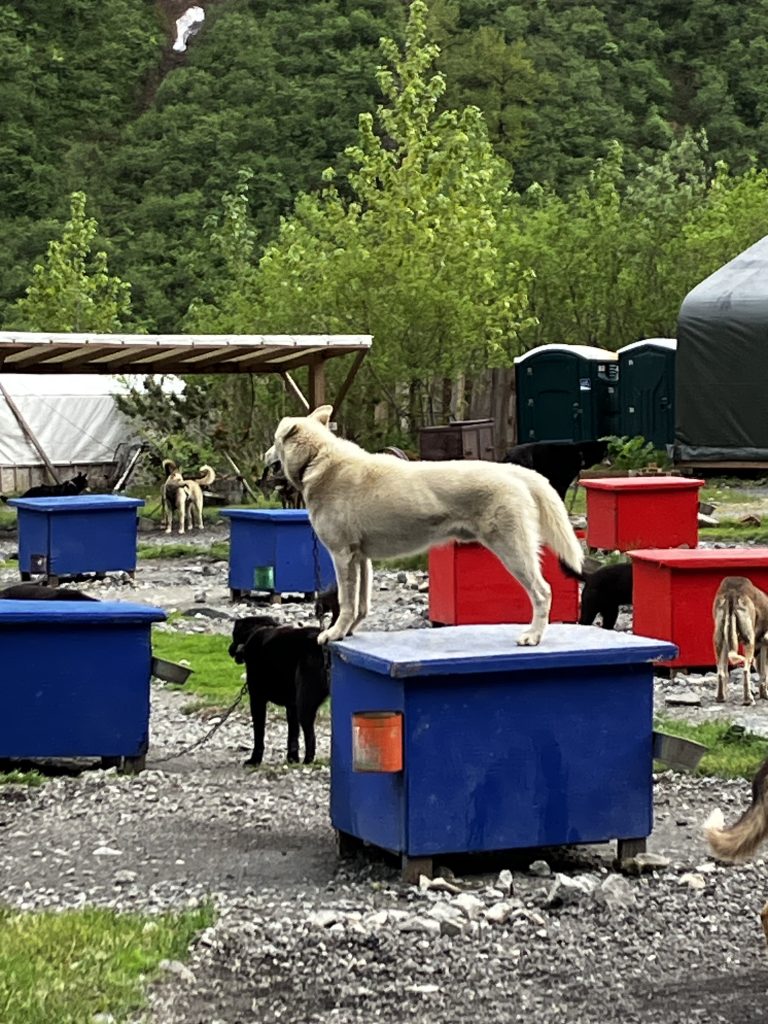
They’re all muscle.
They’re bred to thrive in harsh climates for winter.
“These guys can go 100 miles a day. They take breaks, which just means to walk at a really moderate slow pace every 5 to 50 miles, depending on how long the race is. We’re here for the summer but our actual kennel is in central Oregon.”
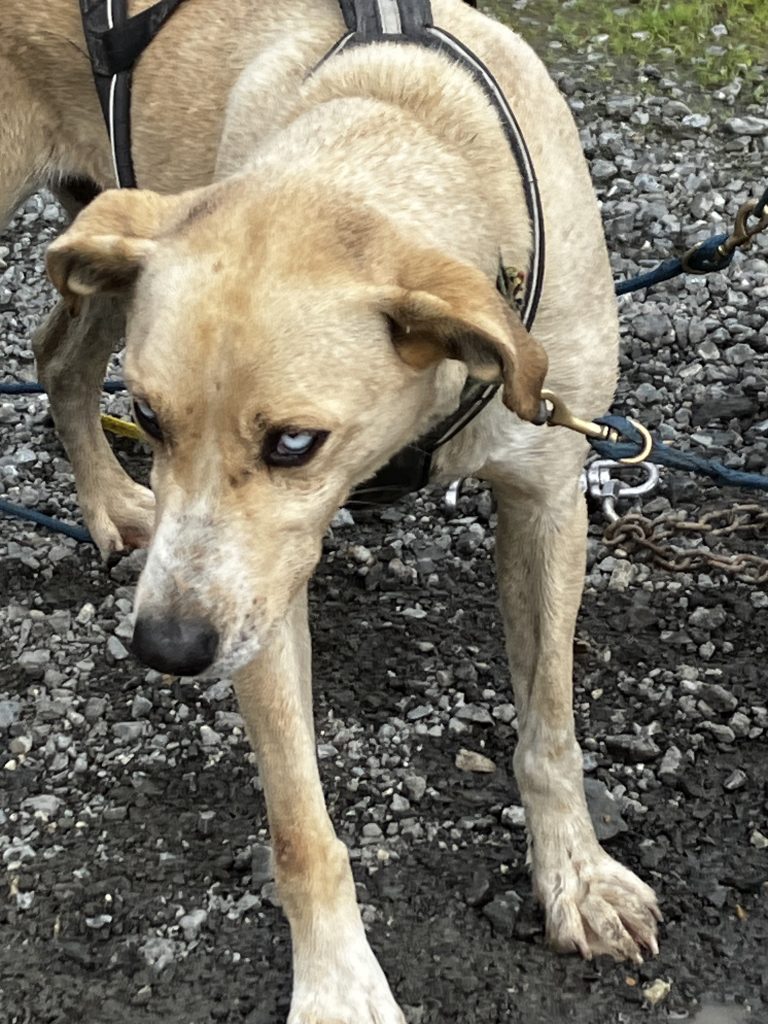
You can see the husky eyes on Ranger. I don’t know if I like the blue eyes on a dog – I’m not used to it.
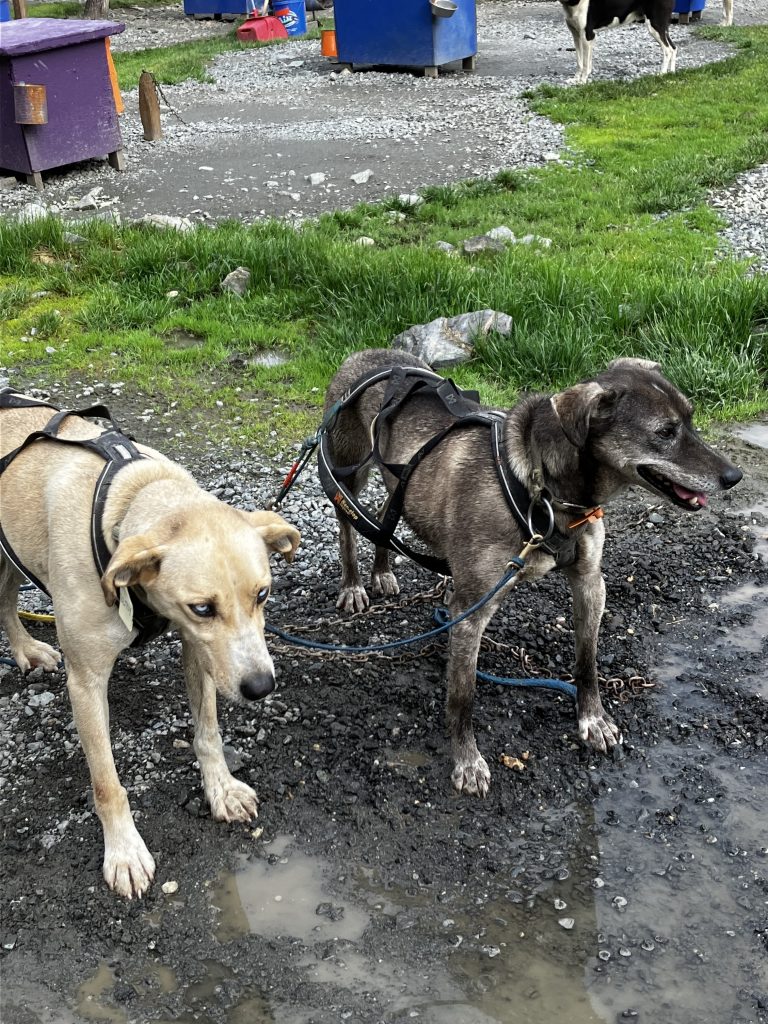
But he and Georgia were good dogs. Even though they’d just pulled us around two miles of track, the team was ready to go out again.
“This 2 mile track is nothing to them,” said Jake.
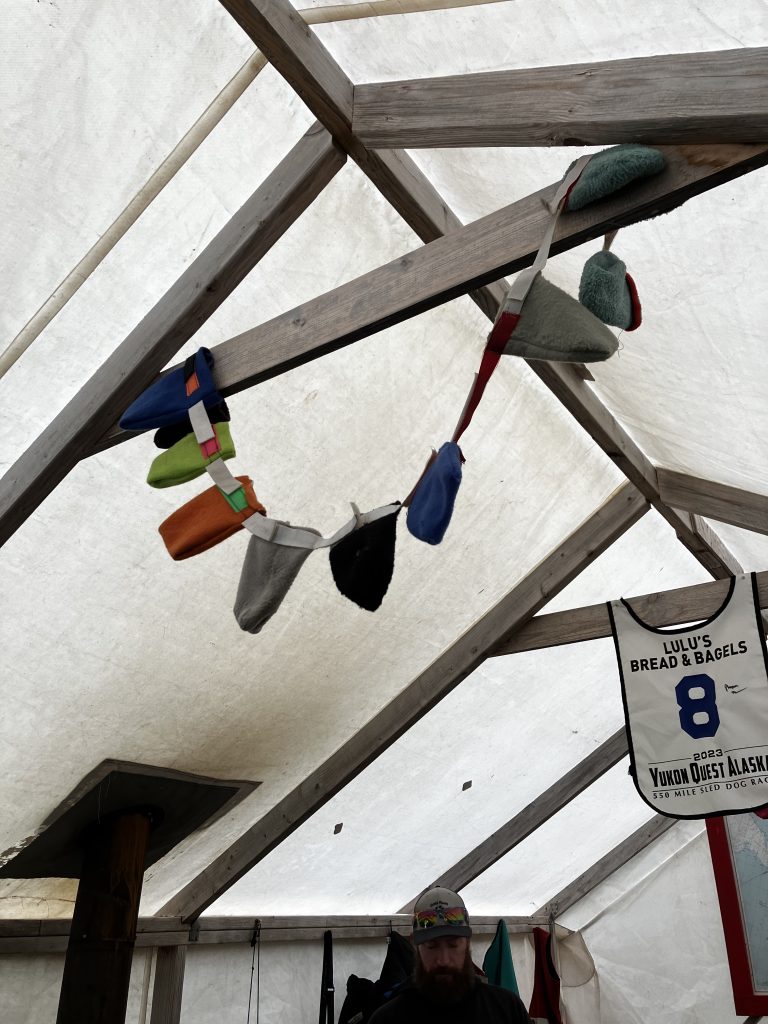
Here are some boots for the dogs, which they need when the temperature goes down to NEGATIVE 30 and beyond.
omg.
“It’s a delicate balance,” said Jake. “If you put the boots on too early, you’ll harm your dogs because one of the most efficient ways they cool down is through their feet. If you put the boots on too early, you’ll heat them up and they’ll suffer. If you leave them too long without them, their feet will get ice between the pads and they’ll get cut on the ice.”
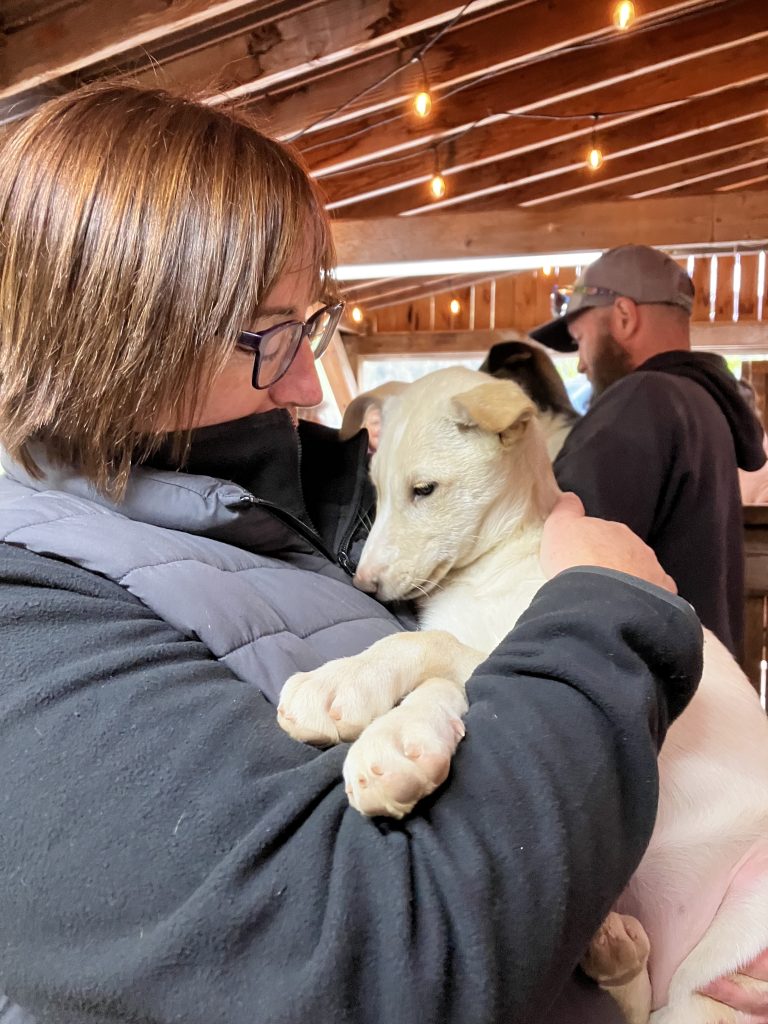
Finally we got to see the puppies. Megan was in her element.
There were 3 litters here – one that had 12 week old pups and two litters that were one week old.
Interestingly, none of these litters are owned by the people here. Owners bring theor puppies here to be socialised by all the tourists. What a great idea! Almost from birth, these dogs are getting used to being handled by a multitude of people. Their temperaments will be bomb-proof!
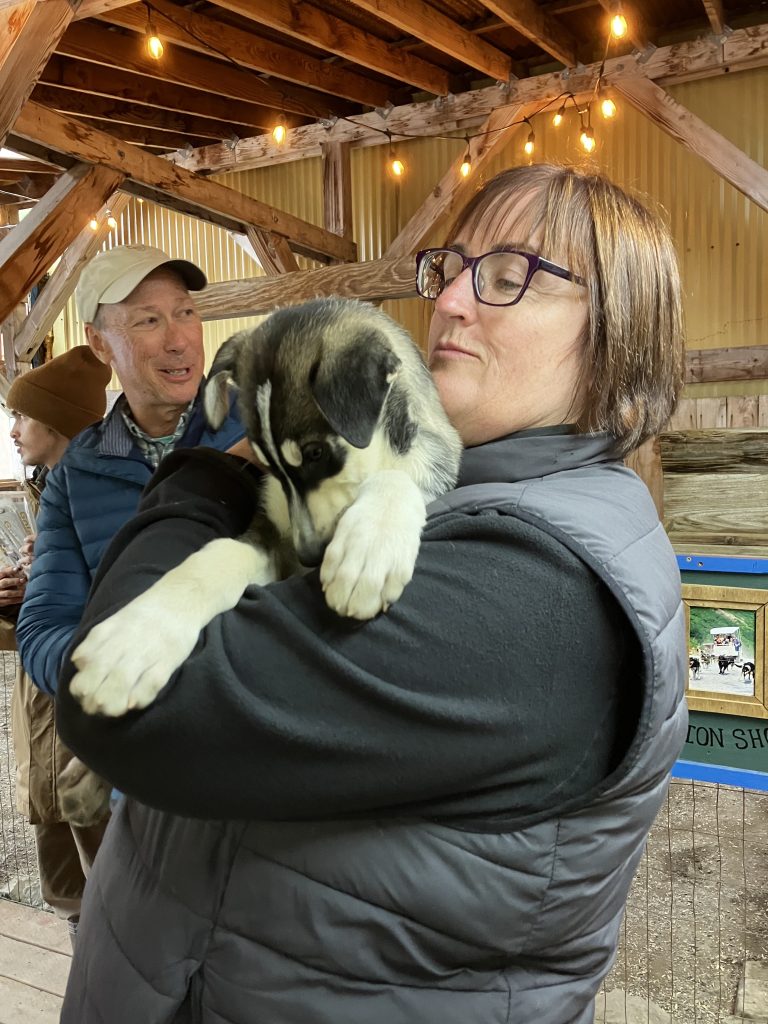
The 12 week old litter had 4 girls and a boy, so the staff here have given them nicknmes from ‘The Office.’ This one is Dwight.
It was strange. I thought I’d be all over the dogs but once I was here, I wasn’t at all. I patted the team who took us around the track, but I didn’t want to cuddle the puppies.
I think I wanted MY dogs, all three of them.
However, it was a different thing when they brought out the babies.
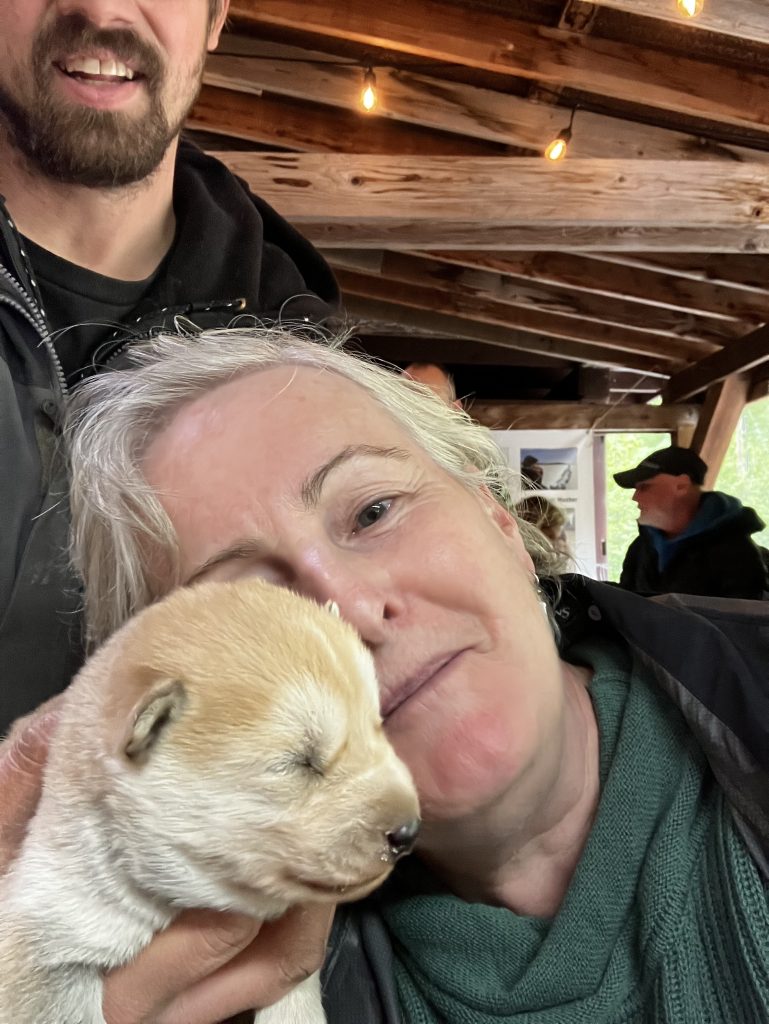
Their eyes weren’t open yet and they were still making that squeaking sound very young puppies make. I remember it from when I used to breed puppies, in the years before I started breeding humans.
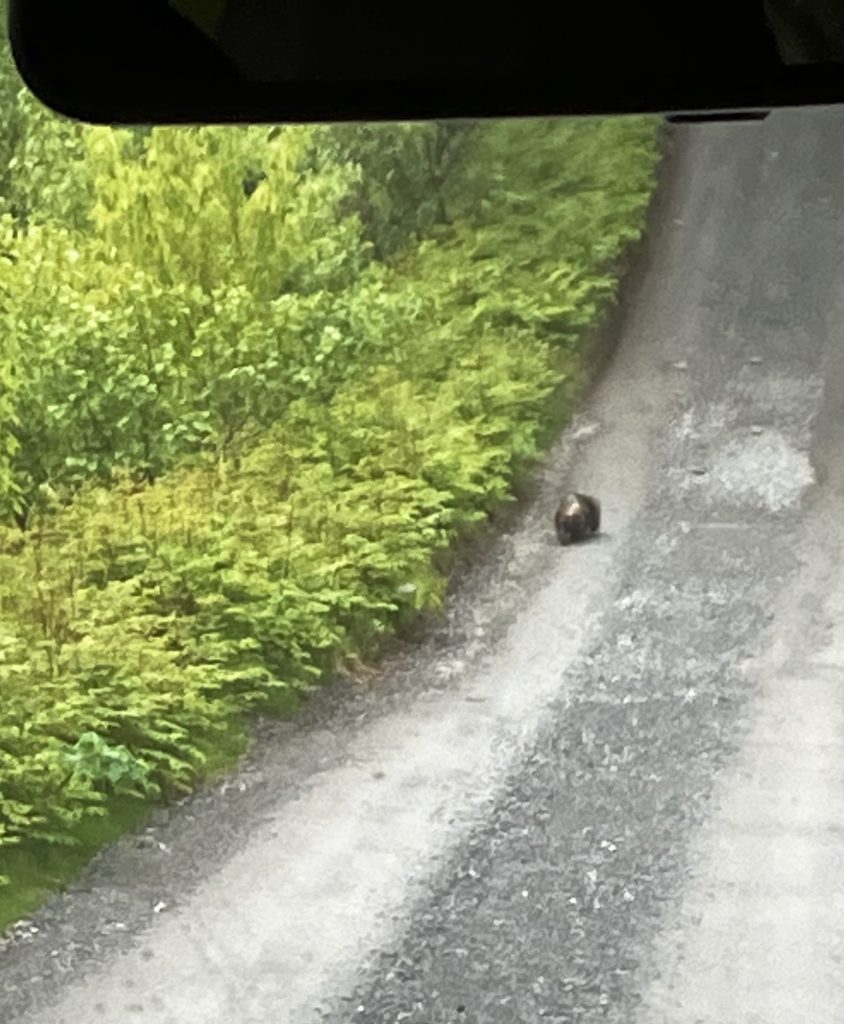
On the way back to town, we saw a porcupine walking along the road.
No bears. I’m starting to believe that bears are very rare here and that it’s all a big lie to entice tourists over here.
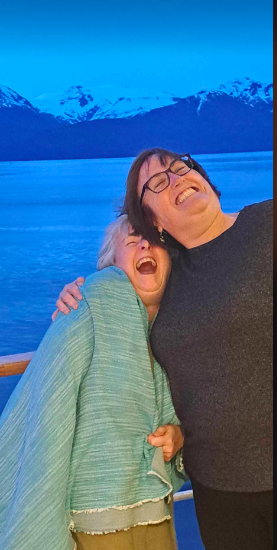
We ate at an Italian-themed restaurant on the ship this evening and joined up with a lively group of people out on the deck afterwards.
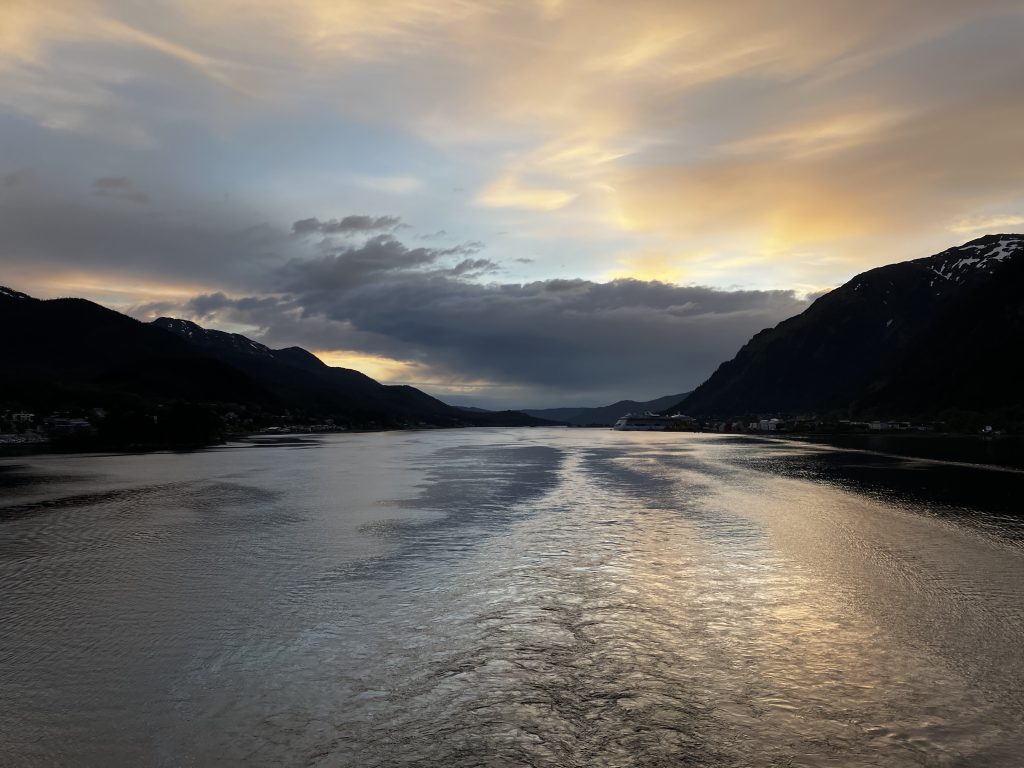
Goodbye Juneau! I’m sorry I didn’t get to catch up with Rae, but the rest of it was fun.
Dad joke of the day:

Leave a Reply